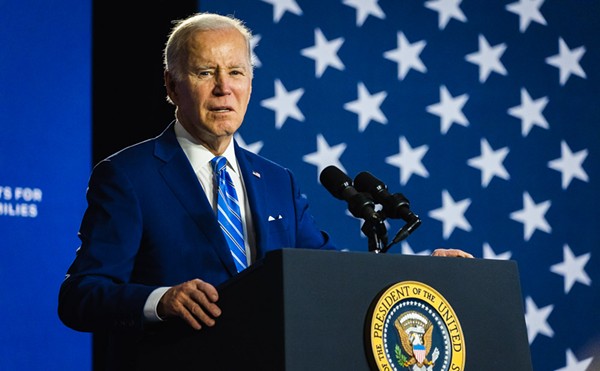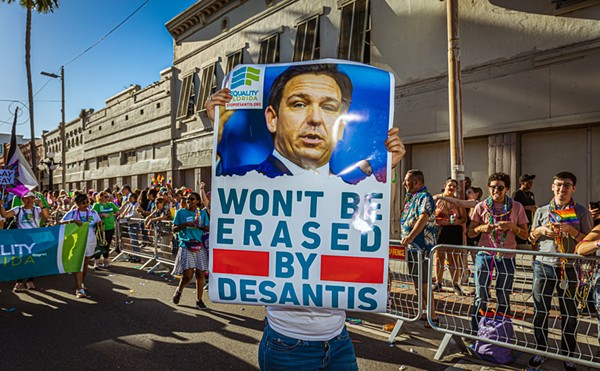Stormwater isn't sexy. Efficient stormwater systems don't attract tourist dollars or add a touch of class to a culture-deprived city. But what they lack in sex appeal they make up with utility. That standing water you have to drive thorough on South Dale Mabry? That's a stormwater issue. That nasty muck that settles on the bottom of the Hillsborough River and makes its way into the Bay? That's partially a result of stormwater. When it rains, all of that water has to go somewhere and it takes all of the pollution on the streets and chemicals on lawns right along with it. In Tampa the system that's supposed to keep our streets flood-free and our waterways clear of debris and pollution is missing a lot more than sex appeal; it's also missing accountability, efficiency and a reliable source of cash, according to the Department of Environmental Protection. The DEP took over the responsibility of overseeing wastewater programs from the Environmental Protection Agency last year and is in the process of reissuing Tampa's Municipal Separate Stormwater Systems permit or MS4. It's still early in the process, said Mark Bateman of the DEP's MS4 division, but already it's clear that issuing Tampa's permit won't be an easy process. After a review of the city's records the DEP found some things amiss.
"We have found serious flaws, serious shortcomings in their annual reports," said Bateman.
In their 1999 annual report, the city claimed that approximately 19,075 inspections of stormwater drains were done and in the 2000 report the city claimed to have performed 18,154 inspections. These inspections were performed with just three area inspectors and one chief inspector, according to the city. That would mean that each inspector performed more than 17 inspections a day, based on 260 working days a year.
The DEP is more than a little skeptical of Tampa's hardworking inspectors, said Bateman.
"Everybody went, "Wow, 19,000 inspections, that's a lot."
The DEP's inspectors manage an average of two inspections a day. The agency's inspections are more rigorous than the ones the city is required to do, said Bateman, but not that much more rigorous.
"If they're just driving by, they could probably hit 17 a day," he said.
Another problem is the calculations the city used to estimate the impact stormwater has on local waterways. It's impossible to gather actual data because the storm system is so vast, so the city uses models and mathematical calculations to create estimates. But apparently the city used different calculations and models at different times. Without consistency it's impossible to make estimates, said Bateman. There seems to be no way for the city to know if its stormwater program is protecting the environment or causing further damage, he said.
That's a big problem, but the biggest problem: the city's Capital Improvement Projects list. They don't seem to have one. The list should include projects like retrofitting storm drains for flooding, assigning them a priority and explaining how the city plans to pay for them, said Bateman. The agency wants to be sure that if the city is planning to address flooding issues they don't plan to it by just widening a pipe, which would violate the terms of their permit. The DEP wants proof that when a wider pipe is installed, technology that will limit pollution and debris will be installed as well.
The DEP is also interested in hearing how Tampa will pay for these projects. The city is one of the few large municipalities in the state that does not have a stormwater utility fee to provide dedicated funding for stormwater projects. St. Petersburg has one, as do Hillsborough County, Clearwater, Sarasota and Bradenton. In Tampa the money for stormwater comes from a general fund and can be diverted to other projects as the city's administration sees fit. Without a dedicated funding source, Tampa is unable to compete for some government grants that would provide funds for stormwater projects. They also would find it more difficult to get the low-interest loans the DEP offers, said Bateman.
"We're not happy with that," he said. But the agency can't do anything about it. The people who can do something about it, the mayor and the City Council, are apparently unwilling. Councilman Bob Buckhorn said that the issue of a stormwater fee hasn't come up since the late 1980s and probably won't come up anytime soon. The Community Investment Tax, a sales tax that voters approved in a referendum in 1996 to help pay for Raymond James Stadium, was also supposed to generate money for stormwater projects, said Buckhorn. Instead, Mayor Dick Greco diverted a huge chunk of that money to pay for a new museum and an expansion of the Lowry Park Zoo. That bait-and-switch would make it hard for voters to stomach a stormwater tax. "I don't think we can go to the community and say, "We told you we were going to do this before, but we were only kidding. Now we're serious,'" said Buckhorn.















